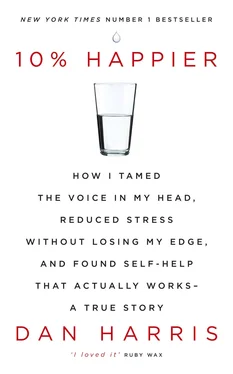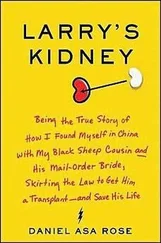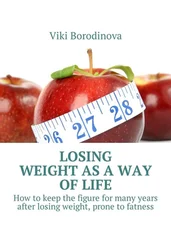I took my first little stab at addressing meditation’s PR problem when World News aired my story on the increasing embrace of mindfulness in counterintuitive locales. We showed a graphic of a brain, illuminating the regions that, to use Diane’s words, got “plumped up” as a result of meditation. We used a sound bite from Rivers Cuomo, the lead singer of Weezer, who credited the practice with curing his stage fright. I explained how simple meditation was—and that there was no need for robes, chanting, incense, or joining a religious group.
When I walked off the set after my live shot, members of Diane’s team were abuzz. Was it really that simple? How many minutes a day did they need to do to change their brains?
The next morning I got an email from Diane herself, who expressed an interest in learning more about meditation. If I could hook someone like her, it felt like a pretty good start.
As excited as I was about the notion of popularizing the practice, the concerns of some of my old-school Buddhist friends, including Mark Epstein, did give me pause. The traditionalists did not appreciate the irony of capitalists and marines embracing a practice with a history of disdaining violence and accumulation of wealth. They worried that mindfulness would simply create better baby killers and robber barons. They pointed derisively to the proliferation of books such as Mindfulness for Dummies , The Mindful Investor , and The Joy of Mindful Sex . Critics had a term for this phenomenon: “McMindfulness.” There was something important being overlooked, they argued, in the mainstreaming of meditation—a central plank in the Buddhist platform: compassion.
While I’d digested enough dharma books and lectures to know that Buddhists were always going on about compassion, I had long figured I could ignore the issue, the same way I did with karma or reincarnation. It was true that mindfulness had made me calmer and less reactive, and that I now felt the urge to spread the word as far as I possibly could, but still, my goal was not to be Mother Teresa.
Despite my powerful experience of being snot-soaked and supine while doing compassion meditation on retreat, I had not subsequently pursued metta in my daily practice. My resistance was based, in part, on the fact that compassion meditation was a little annoying—but more significantly, it stemmed from a deep-seated suspicion: that we each have a sort of kindness set point, the result of factory settings that could not be altered, and that mine may not be dialed particularly high. I was a good enough guy, yes. I loved children and animals, etc. If no one was looking, I might even get misty during a rom-com. But the Buddhist concept of boundless compassion seemed out of reach.
Once again, science—and a well-timed personal encounter—would shatter my assumptions.
Chapter 10
The Self-Interested Case for Not Being a Dick
The international avatar of compassion marched briskly into the room and declared that he had to relieve himself.
“First duty!” said His Holiness the Dalai Lama, as he bustled off toward the bathroom. He seemed sprightly, but certainly not, as decades of relentlessly positive publicity might have led one to believe, trailing pixie dust. Moreover, the members of his entourage—often a reflection of the person they serve—were uniformly stern and unsmiling.
I came into this interview with a bad attitude. Most of my friends in the meditation world revered the Dalai Lama, but to me he represented the part of Buddhism with which I was least comfortable. What I liked about the dharma was its rigorous empiricism and unyielding embrace of hard truths. Here, though, was a guy in robes, anointed at the age of two because some government monks claimed to have seen special signs, like a rainbow in the sky near his childhood home. Fast-forward a few decades and he was buddies with the Beastie Boys and Richard Gere, invited to guest edit Vogue , featured in Apple ads, and the subject of adoring movies by the likes of Martin Scorsese (who reportedly said he could feel his heart beat more keenly in the Dalai Lama’s presence).
My contrarian impulses were heightened by the fact that I’d just watched a bunch of scientists here at Emory University fawn all over the Dalai Lama. As the academics presented the results of their research on the effects of meditation, they leaned forward, literally on the edge of their seats, while obsequiously calling him “Your Holiness.” Meanwhile, he sat there wearing an oddly inappropriate sun visor (presumably to protect his eyes from the overhead lights).
Once His Holiness had emptied his bladder, he was back in character, the smiley guy we know from gauzy hagiographies. The Emory conference had just wrapped up, and we were going to do the interview backstage. I started by asking about his long-standing support for scientific research into meditation. “There’s a risk,” I said. “What if scientists discover something that contradicts your faith?”
“No—no risk. If a scientist confirm nonexistence of something we believe, then we have to accept that.”
“So if scientists come up with something that contradicts your beliefs, you will change your beliefs?”
“Oh yes. Yes.”
Reassuring answer. I wondered to myself, though, whether this policy applied to the issue of rebirth. If scientists could prove that he wasn’t the reincarnation of the previous Dalai Lama, it would erase all his religious and political power, leaving him just one more old man in a visor.
Next litmus test: “Is your mind always calm?” I asked.
“No, no, no. Occasionally lose my temper.”
“You do?”
“Oh yes. If someone is never lose temper then perhaps they may come from another space,” he said, pointing toward the sky and laughing from the belly, his eyes twinkling beneath his thick glasses.
“So if somebody says to you, ‘I never lose my temper,’ you don’t believe them?”
“No. And some people say this is some miracle power—I don’t believe.”
Within minutes, he had already proven himself more reasonable than either Eckhart Tolle or Deepak Chopra.
As I sat there, surrounded by cameras, my crew, the Emory PR people, and His Holiness’s Tibetan retinue, it dawned on me that the Dalai Lama was yet another person I’d prematurely misjudged. After all, even if he subscribed to a metaphysical program I didn’t share, he had actually played a key role in jump-starting the scientific research into meditation, providing both inspiration and funding. What’s more, I realized, one should probably not overlook that whole thing where he responded to the Chinese invasion of Tibet—from which he barely escaped with his life—with repeated requests for forgiveness and nonviolence.
As the interview progressed, my posture—both internally and externally—changed. It’s not that I was feeling my heart beat more keenly, à la Scorsese, but, like the academics I’d scorned at the conference, I, too, was now leaning forward in my chair, with the closest my face can come to a beatific expression. Meanwhile, I was relieved to find the Dalai Lama seemed to be pretty engaged himself. I’d read that if he leaned back in his chair, that meant he’d lost interest. But he was still inclined toward me, eyes bright.
Toward the end of our twenty-minute interview (the Tibetans, like Tolle’s people, were very strict about time) came an exchange that fundamentally changed my view on compassion. I brought up something he’d posted on Twitter. (The fact that he had a Twitter feed was another reason to like the man—although I was pretty sure his staff managed the account.) “You have a quote that I love. You say, ‘Most of one’s own troubles, worries, and sadness come from self-cherishing, self-centeredness.’ But don’t we need to be somewhat self-centered in order to succeed in life?”
Читать дальше












